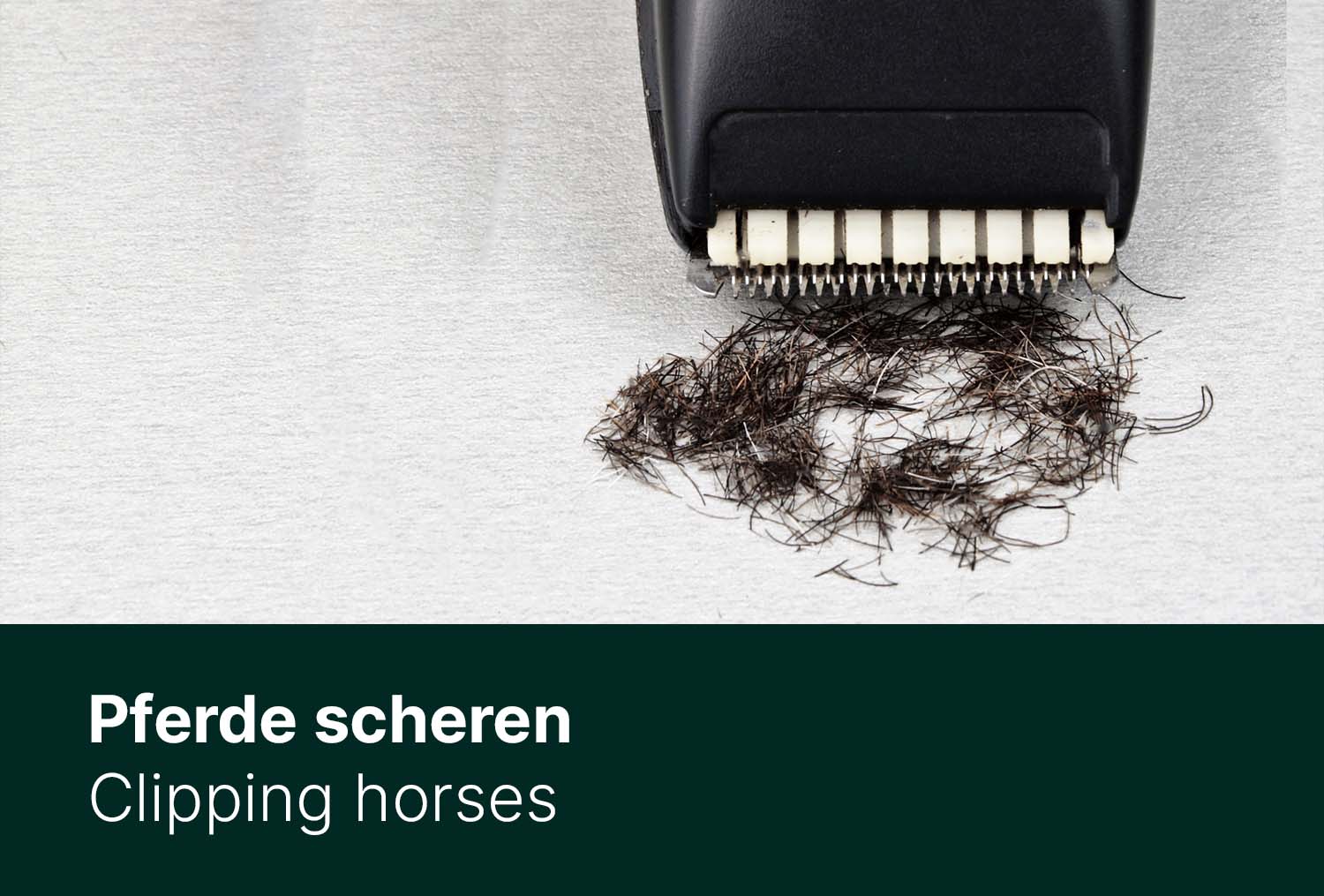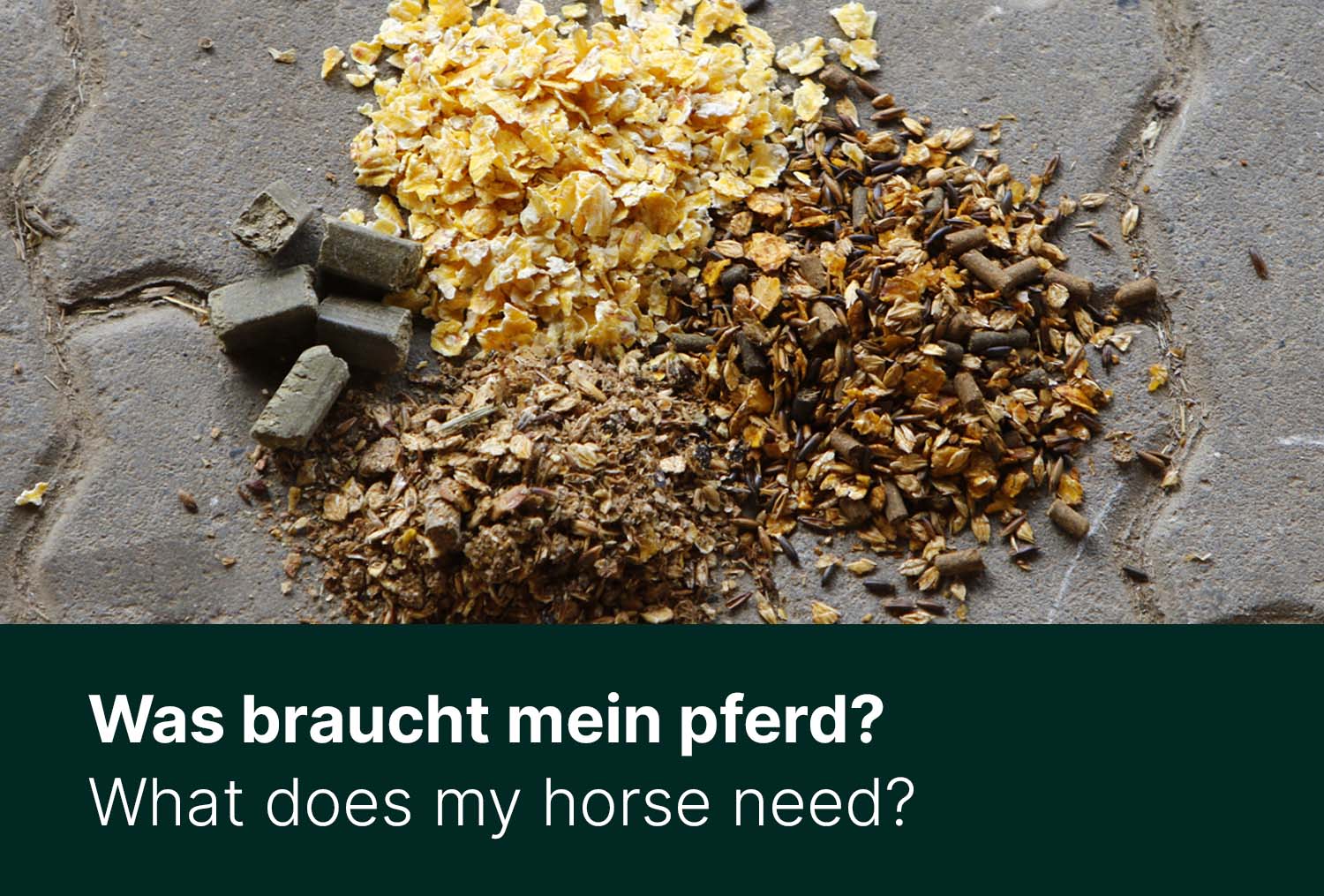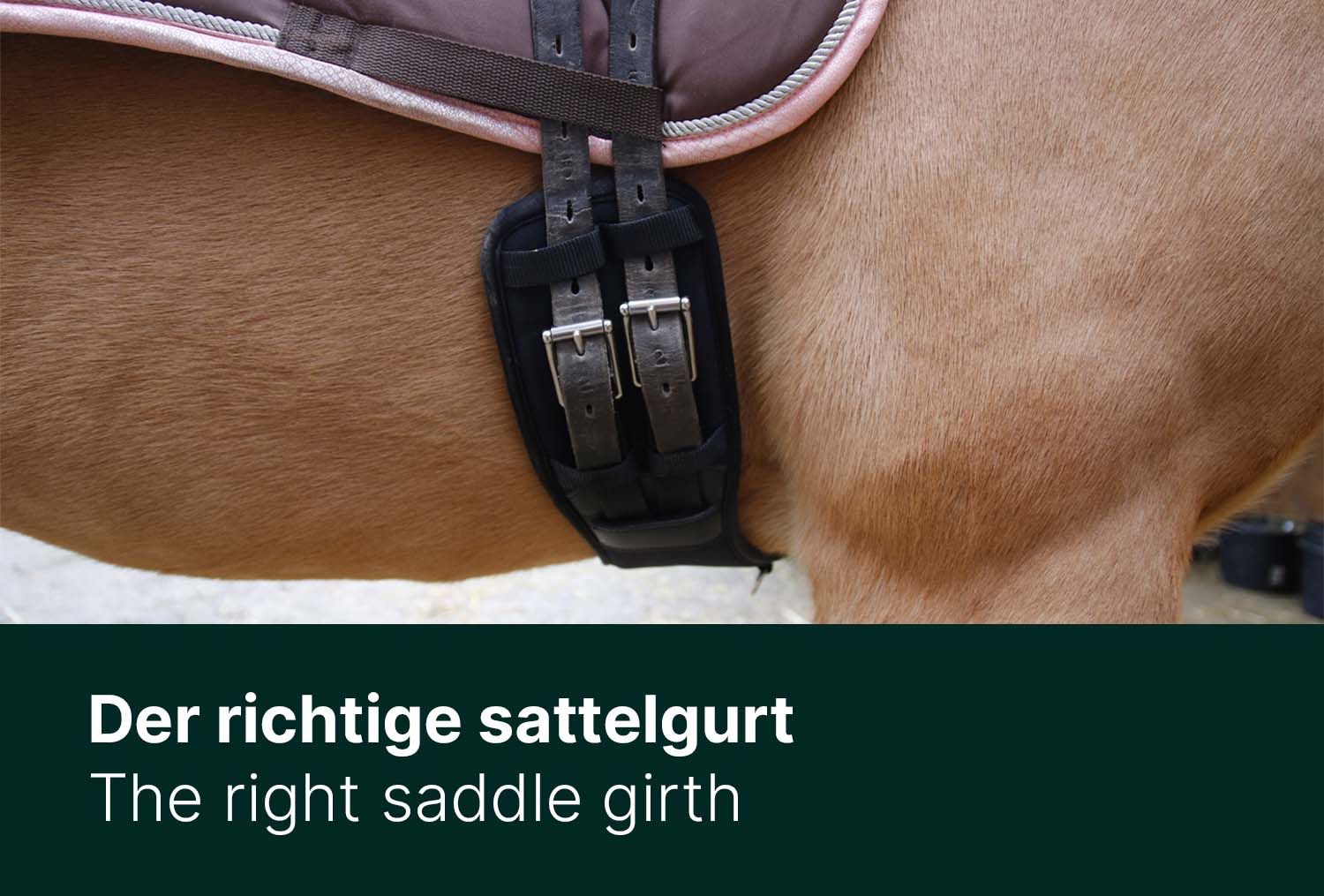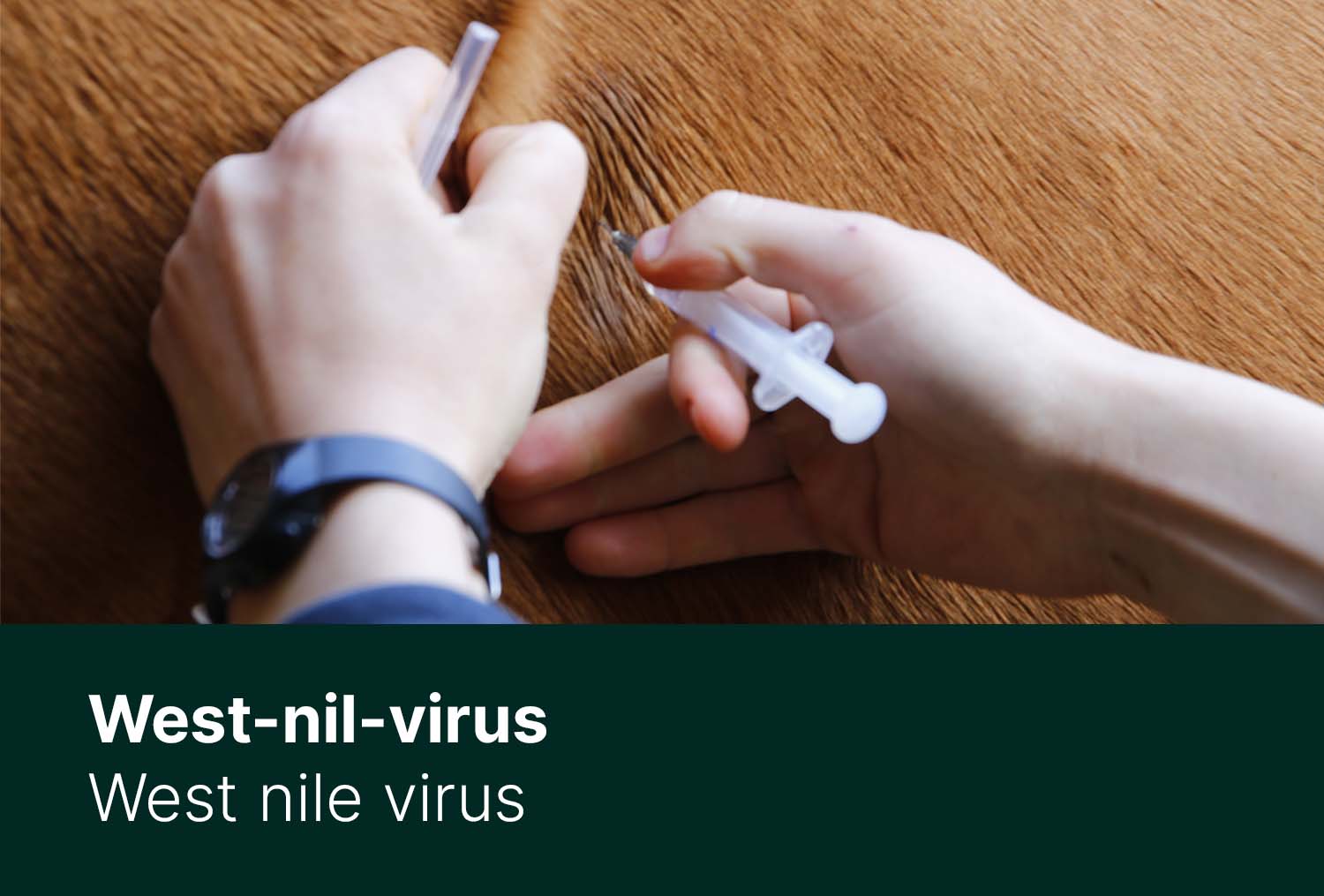We researched and summarized which components you should consider, how you can ease the procedure of clipping for scared horses and how to properly maintain your clipper.
I. The variety of clipping
Clippers are already in use at the end of the grazing season (September / October) in most stables. From the classic clipping to abstract artworks, everything can be found. The clipping should always correspond with the workload and the keeping of the horse, as well as the work effort of the horse owner. First of all, clipping may mean a relief to counteract excessive sweating, but it also means more responsibility, time and money.
The variety of clipping techniques can be admired in almost every stable: Full Clip, Trace Clip, Blanket Clip or Hunter Clip are just a few of the numerous possibilities that give the horse owner an incentive to get his/her horse ready for winter. However, horses do not necessarily need to be clipped, because their thick winter coat adopts to the outside temperatures and thermoregulates them efficiently. However, some breeds tend to have extremely dense fur, also older horses can be easily overwhelmed by the change of coat. In such cases, a partial clipping makes sense to provide the horse relief. The clipping of healthy horses should always be based on a few criteria:
- How is the horse kept?
- How much is the horse being worked?
- Am I ready to buy appropriate blankets?
- Can I operate a clipper properly?


II. Clip or not Clip?
As in all aspects of the equestrian sport, there are also opposing opinions on the pros and cons of clipping. It is important to find the best option for you and your horse. Although uncut horses mean time savings due to shorter periods of sweating, it also means that the use of blankets needs to be adapted to the outside temperatures. It may well be that after a few days of frost, days with temperatures beyond the 10-degree mark prevail. In such situations, the horse owner must be flexible enough to put a thinner blanket on the horse. The thermoregulation of the fur is virtually gone due to the synergy of the clipping and the blanket. This can lead to the horse sweating, which in the case of a night frost can easily lead to illnesses. The aspect of possible illnesses speaks in favor of a clipping. For example, if the horse owner does not spend sufficient time, after a long ride or a strenuous training session, to ride his horse properly 'dry'. The wet coat is the No. 1 cause for a cold during winter. Whether clipped or not: The responsibility for the horse is always the same and should not be left thoughtless.
III. The Optimal Preparation
For a good and horse-friendly clipping, the clipper and the rest of the equipment are essential. Which clipper is worth considering depends mostly on the characteristics of the horse coat (thick, long, thin), the size of the surface and the pattern which should be clipped. You can get the corresponding expert advice directly from the manufacturers. Generally are battery-operated clippers suitable for small clippings, thin fur or filigree patterns. Heavy machines with cables are much better suited for big tracks and thick fur.
The fur of your horse should be absolutely dry. Therefore, it is better to not ride that day as well as to keep the horse inside during rain. Thorough cleaning in advance ensures that the clipping will be even. If you do not completely clip your horse, you may want to draw the lines on the fur with chalk. In order to prevent an accidental shave of the mane and tail, you can weave in the long hair and stick a piece of tape along the mane comb. Always clip in the opposite direction of growth. Special care needs to be taken when clipping the sensitive parts of the body, such as the face, vertebrae as well as the knee and/or elbow bends. For these positions, you should seek someone to help you, so that one person can 'pull' the appropriate places and the other person can carefully clip them.
To ensure a horse-friendly clipping, it is advisable to care for the clipper well: This includes on the one hand sufficiently sharp knives, well-adjusted shaving heads and on the other suitable oil for your clipper. Please only use original clipping oil, other types of oil can lead to the oil film breaking down on the knives which leads to them overheating, wearing out faster and to achieving no satisfactory outcome. The knives of the clipper need to be oiled even during the clipping - the frequency and quantity of this procedure you can find in your manual. Let the clipper run in neutral with the oil on it for a few seconds before you start.
Afterward, the machine with its individual parts gets cleaned. The remaining coat, dirt, and oil get cleaned off the razor blade with a fine brush. For storage, it is recommended to remove the blades and stored them in a sheltered place. It is not necessary to buy new knives after every clipping session - it is possible to get the old knives sharpened in retail stores, making them ready for the next use.
Horses should generally be clipped in October, depending on the weather conditions. The thicker and denser the winter coat is, the more difficult it is for the horses to transition after a clipping. Therefore, even with relatively mild temperatures, the legs can additionally be clipped.
IV. With Nervous Horses
A clipper is basically nothing more than a shaver in noisy, but for our horses, it is a machine that not only makes extremely loud and unknown noises but also vibrates considerably and the horse owner now wants this machine to touch the fur of the horse. It goes without saying that not all horses will stay relaxed in this scenario. So, if you have an inexperienced, nervous, young or frightened horse, there are many reasons to prepare for the upcoming clipping. One possibility to get ready could be to bring the clipper to the stable a few weeks prior and to let turn it run. During this procedure, your horse should be in his box or in another 'safe' zone. Once the horse gets used to the noise, you can get closer and closer to the horse with the clipper. Meanwhile, there are even clippers, which are specially designed so that the background noise is softened. In the next step, you can improvise a clipping with the switched off clipper - of course without a knife. Just push it lightly against the fur and drive off the entire horse's body carefully. Many horses have problems with the feeling of vibration. For this you can, for example, buy a vibrating massage frog/beetle or something similar in a euro-store - this does not vibrate quite as extreme as a clipper, but the horse is already prepared for the actual clipping. If you now want to dare the first 'tries' on the horse, get yourself some support from others who can calm your horse, if needed. Especially suitable at the beginning are the battery-operated clippers, which are quieter and have no cable in which the horse can get caught if it flinches back anxiously.
- Tip:
Give yourself and your horse enough time to get used to the situation. If you do not have any previous experience, ask someone else to clip your horse for you or who 'supervises' you while you are clipping.
If you do not have your own clipper, you can also get a common machine within the stable community, otherwise, there are already clipper-services or clippers that can be borrowed.
(Titelbild: Showmaster Schermaschine Professional II von Krämer)







Deworming Horses - Selectively or Systematically?
Winter Care - Proper Care for Saddle, Bridle & Co.